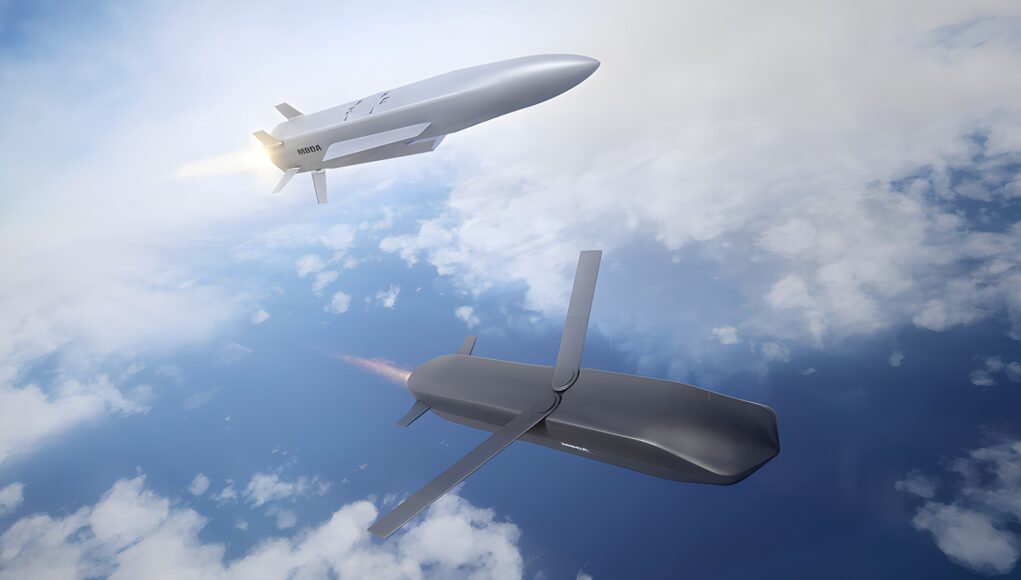MBDA has announced significant advancements in its Future Cruise/Anti-Ship Weapon (FC/ASW) programme, an initiative designed to strengthen Europe’s sovereign deep-strike capabilities.
This multinational effort, led by France and the UK, is focused on developing two distinct missile types: an ultra-low-observable subsonic missile and a supersonic, highly manoeuvrable missile, both tailored to overcome modern air defence systems in high-intensity conflict environments.
In the latest update, MBDA revealed that the FC/ASW programme has successfully reached several key testing milestones, including the production of the first prototype for the ultra-low-observable subsonic missile. This prototype underwent extensive radio-frequency (RF) signature testing at MBDA’s dedicated facility, aiming to confirm its reduced detectability.
According to the company, these tests displayed promising results, reinforcing MBDA’s standing in advanced missile technology. Concurrently, MBDA completed rigorous wind-tunnel trials on the propulsion system of the supersonic variant at its Bourges facility in France, with MBDA officials suggesting that these tests met or exceeded performance expectations.
The FC/ASW project is currently progressing through its assessment and risk-reduction phase, focusing on reducing technical risks and increasing the maturity of critical subsystems and technologies.
Over 750 technical experts from the UK and France are actively working on the program to ensure it meets the aggressive timeline set by launch partners. Italy has also joined the programme in a supporting role, with plans to fully integrate as a tri-national partner in the near future.
MBDA has conducted additional tests on both missile types, including trials of their advanced seekers, warheads, and fuzing systems, as well as extensive aerodynamic assessments. The program aims to deliver a robust deep-strike capability that combines advanced stealth and manoeuvrability with resilience against sophisticated air-defence networks.
The multinational collaboration underpinning the FC/ASW program is a strategic endeavour that aims to safeguard Europe’s defence autonomy. MBDA’s multinational framework allows each partner country to contribute to the program while maintaining control over key technologies, the firm says.
Moving forward, MBDA anticipates further prototype trials and initial manufacturing as the project transitions to its demonstration phase. The inclusion of Italy will be formalised as MBDA enters the next stages, ultimately ensuring that Europe’s leading armed forces have access to this critical new deep-strike capability.














If they don’t call the subsonic missile Storm Shadow II then MBDA should fire their marketing department.
It’ll be interesting to see which of these two designs will be more adept at penetrating air defence shields. As SAM systems become ever more maneuverable and fast, the supersonic option seems like it might struggle compared to the stealthy subsonic design.
It’s certainly the question that has been troubling a lot of people, including the FCASW team.
Speed is definitely the preference in Russian doctrine; the development of supersonic and hypersonic “unstoppable” weapons in the same vein as the Nazi’s Wunder Waffen, but that sort of speed requires big, not very manoeuvrable weapons that are easy to spot and hard to aim precisely. However, you’re going to need a reasonably high performance air defence weapon to stop one.
Against that, slower and stealthier weapons have generally been the preference in the West for the past few decades. Beyond the mass hype for anything “stealth” since the 90s, there’s a lot of good logic behind it; one of the first paradigms of survivability is “don’t be seen”, and with the West’s technological advantages (and higher individual cost of weapons and platforms), sneaking weapons through less sophisticated air defences is a lot more efficient than brute forcing a big salvo through against what are generally very heavily armed foreign ships. The obvious downside though, is that if the weapon IS detected, you can potentially shoot it down with a cheaper, lower performance weapon than you’d need for a supersonic/hypersonic one.
I suspect it’ll be supersonic for anti ship where there’s no terrain to mask it’s approach and stealth subsonic for land attack , certainly the French campaigned hard for a supersonic anti ship missile after exercises in the Mediterranean a couple of years back.
Interestingly, the dimensions are different for the two missiles.
The “slow” one , called TJ15, is very much wider and slightly longer than the “fast” design, which is called RJ10 (according to analysis on Twitter).
That means that only one of the designs can be optimised for VLS launch, but I can’t tell which is the most square overall.
The shorter length of the fast one “might” be to fit a booster for VLS, but also unclear.
And, RJ “might” stand for ramjet, but that wasn’t made clear in the Breaking Defense article that first showed this story.
Yeah, if RJ is ramjet then TJ is likely turbojet, makes sense for a TLAM style missile.
I got it wrong, it’s TP15 for Turbojet Propulsion.
I sort of like the aesthetic of TP 15, it’s like a LRASM but that high, flat nose works really well and probably also contributes to lift.
In a quite odd twist, a lot of places seem to be reporting this as Turbo Prop, but as that’s patently ridiculous I’m assuming that’s short for turbojet propulsion.
Thought if they wanted to be consistent it might have been TP and RP ie Turbojet Propulsion and Ramjet Propulsion but I guess simple logic rarely applies to defence projects. Let’s hope the missiles themselves, which after all are far more important are more focused.
Breaking Defence recently reported “…the TP15 prototype features a Rolls Royce and Safran designed turbojet engine”, and the press has been tracking this since the agreement between the two companies was signed at Farnborough 2022.
FYI – It’s likely to actually be a turbofan rather than a turbojet for increased range. Some of the French docs mentions a turbojet with bypass….which is a turbofan….
Aye good to see this program is still on the books and progressing. Funding should be increased and the implementation accelerated.
🏴🇬🇧